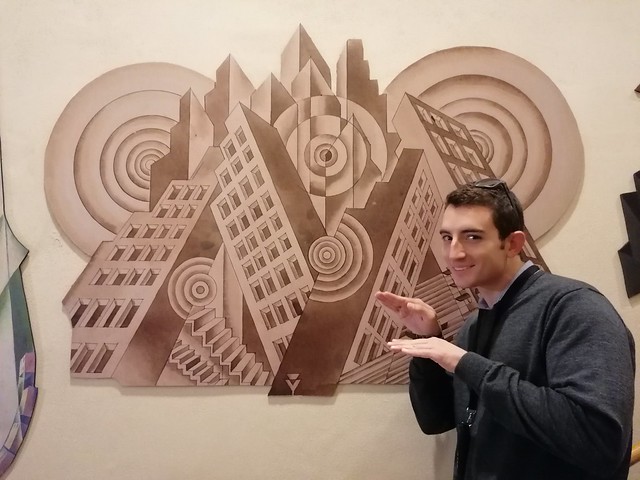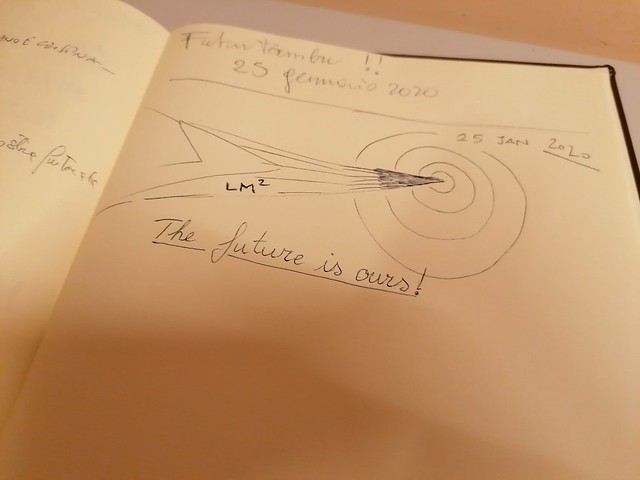Futurismo Arte

A new word for me and although, I've seen the style, I wouldn't have been able to name it. Until now!
Futurismo (Futurism in English). It was an artistic and social movement that originated in Italy in the early 20th century. The style focused on creating a unique and dynamic vision of the future and artists incorporated portrayals of urban landscapes as well as new technologies such as trains, cars, and airplanes into their depictions. The art emphasized the sensations and aesthetics of speed, technology, youth, violence, the working class, objects, and the industrial city.

Italy lagged behind other countries in the pace of its industrial development. Culturally speaking, the country’s artistic reputation was grounded in Ancient, Renaissance, and Baroque art and culture. Simply put, Italy represented the past. Focusing on progress and modernity, Futurismo aimed to liberate Italy from the weight of its past. The key artists basically wanted to see a change in art. They wanted to disrupt art! It's edgy, energetic, intense, different, and NEW.

Uniquely, the Futurists practiced in every medium of art, including painting, sculpture, ceramics, graphic design, industrial design, interior design, urban design, theatre, film, fashion, textiles, literature, poetry, music, architecture, and even cooking. The biggest impact the art makes in my heart/mind is relative to marketing and advertising - my niche!

Key ideas of the Futurists:
- A key focus of the Futurists was the depiction of movement, or dynamism. The group developed a number of novel techniques to express speed and motion, including blurring, repetition, and the use of lines of force. This last method was adapted from the work of the Cubists and the inclusion of such lines became a feature of Futurist images.
- The Futurists published a huge number of different manifestos, using them to communicate their aesthetic, political, and social ideals. Although both the Realists and Symbolists had previously produced similar documents, the sheer scale with which the Futurists created and disseminated their manifestos was unprecedented, allowing them to transmit their ideas to a wider audience. To assist them logistically with their distribution, the group made use of some of the new technologies they depicted in their art including advancements in mass media, printing, and transportation.
- Many Italian Futurists supported Fascism and parallels can be drawn between the two movements. Like the Fascists, the Futurists were strongly patriotic, excited by violence and opposed to parliamentary democracy. When Mussolini took power in 1922 it brought Futurism official acceptance, but, later, this adversely affected many of the artists as they became tainted by association.
Key artist: Filippo Tommaso Marinetti, Umberto Boccioni, Carlo Carrà, Gino Severini, Giacomo Balla, and Luigi Russolo.





